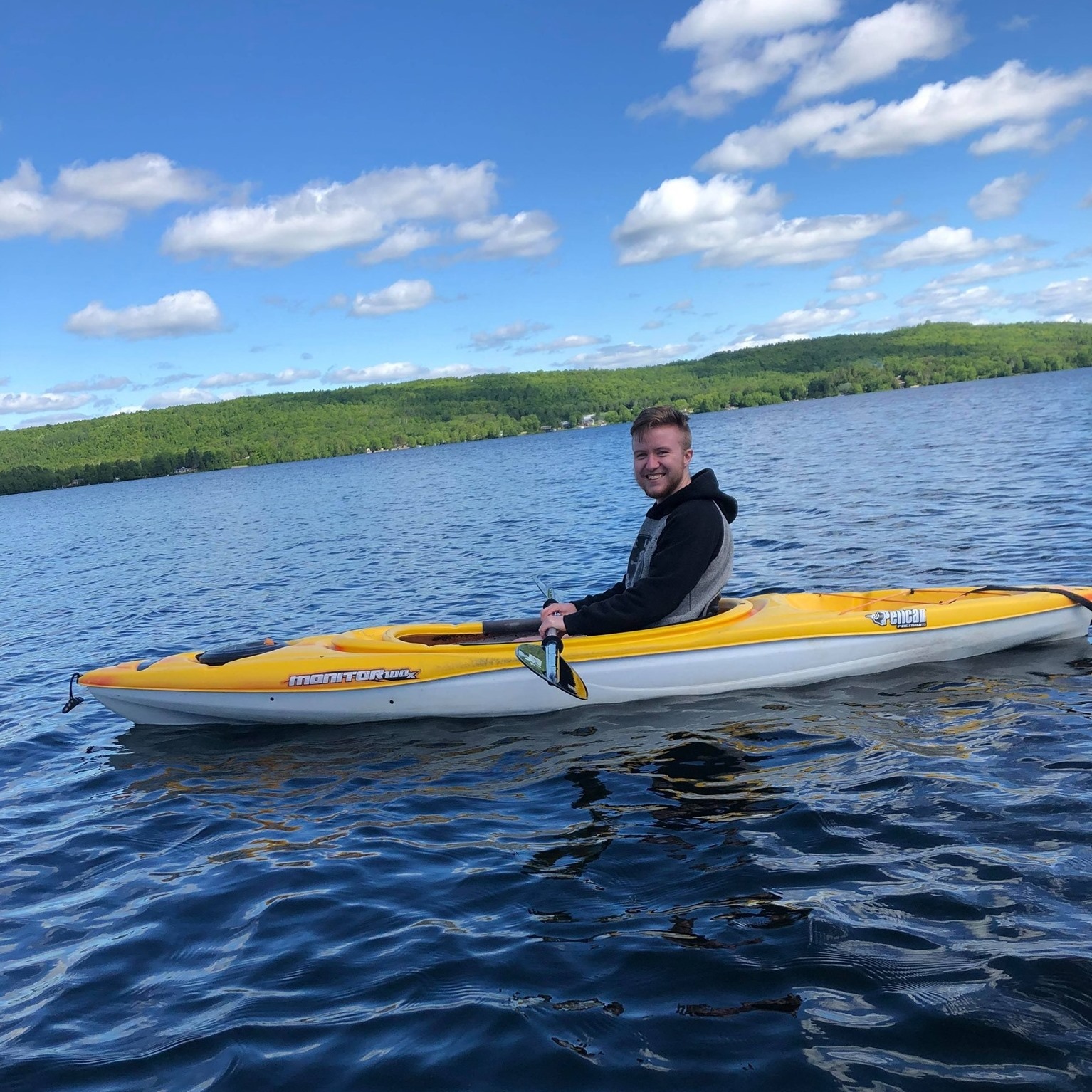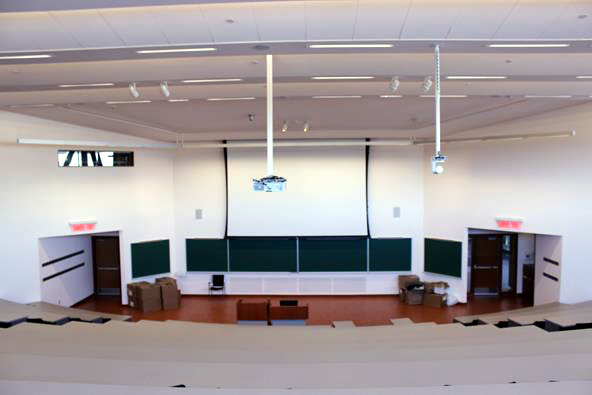The Rainbow Research series returns to the British Ecological Society to celebrate Pride month 2022! These special posts promote visibility and share stories from STEM researchers who belong to the LGBTQIA2S+ community. Each post is connected to one of the themes represented by the colours in the Progress Pride flag (Daniel Quasar 2018).
In this post, Daniel Trotter shares his story on the theme of ‘Life’.

It took some time to figure out what I wanted to write for this post. I’d written last year about who I am and the type of research I do. The SparkNotes version is my name is Daniel (or Dan), my pronouns are he/him, and I’m a second-year PhD student in physics at the University of Ottawa (Canada) working on models of neuroscience with a particular interest in white matter, epilepsy, and network dynamics and stability.
I sat down to do this rather late at night, as graduate students often do. Then again, for as much as I have in common with many of my fellow grad students and other scientists, there is often a quiet sort of otherness in my day-to-day life. With that in mind, I thought I’d try my hand at tying this post to the Red (or “Life”) theme of the Pride flag and speak a little bit about that and how it has influenced some choices I’ve made in my own life.
‘Otherness’
So ‘otherness’: what is that? There is diversity and difference in life at pretty much every level; for many biological systems diversity is critical for robustness and stability. And clearly diversity is a positive in the context of the LGBTQ+ community. However, through the lens of transgenderism in academia, being the diversity in a group can also be its own brand of isolating.
At the day-to-day level, it’s often a summation of smaller differences that probably don’t even register to anyone outside the LGBTQ+ community. It’s days sitting in my office with other grad students, hyperaware of the increasing tightness in my chest, back and shoulders that they’ve never experienced from hours of wearing a chest binder. It’s extra moments I debate over what shirt to wear in public because: How dark/loose is the fabric? Will it hide all of my un-masculine features? It’s sitting on Zoom calls with my pronouns displayed after my name when usually no one else on the call has included theirs. It’s conferences I dismiss going to outright because it’s not worth the risk of going to the location – there are, after all, more places where my life is illegal than where it isn’t.

It’s going on Twitter hoping for some fun science, but instead seeing another law passed somewhere making people like me illegal, or another story of a transgender person being brutalized or killed. It’s the half-moment after I make mention of my identity in public where I wonder whether being open will be the source of antagonism or dismissal from a colleague or collaborator who might otherwise have been a friend. It’s making careful word choices and using half-truths or lies by omission because it’s easier to skirt topics from my younger years that may seem out of place for stereotypical boyhood.
It all sounds exhausting and terrible when I list it like that – and sometimes it is. But diversity (and worrying about it) doesn’t usually start at the day-to-day level.
Seeking representation in STEM
When I was mentally preparing to come out in my undergrad, I was still trying to imagine what my life could look like if I came out: wondering whether I could succeed if I did. It’s not easy stepping out into a space without easily visible representation of yourself.
Most fields outside of STEM have famous examples of LGBTQ+ people. The arts are perhaps the most obvious, with readily available examples such as Laverne Cox, David Bowie and Lily Tomlin. Business has individuals like Apple CEO Tim Cook and Forbes has printed several lists of LGBTQ+ entrepreneurs. Politics and government have examples at all levels in countries where it is legal. Even professional athletics has examples such as Michael Sam and Megan Rapinoe.
STEM fields aren’t quite the same. Not for a lack of people but, in part, because people in STEM fields are not generally public figures. To anyone outside of STEM (or just coming into it), it can easily appear that there are no LGBTQ+ people in STEM because awareness of LGBTQ+ people in STEM is largely limited to searches we make ourselves.

I was lucky that a professor in my undergraduate department is in the ‘LGB’ part of the acronym, so I knew there were queer people, but transgenderism still seemed unheard of. It isn’t, of course, but it is decidedly less common, especially in physics.
According to the 2021 data from CanPhysCounts, there are approximately 12 gender diverse (transgender or non-binary) physics graduate students in Canada, about 52 gender diverse undergrads, no gender diverse postdoctoral fellows and roughly 3 gender diverse faculty members. In the country, from a survey that received over three-thousand responses.
For me, as a graduate student living in Canada, that isn’t the most uplifting in terms of ‘people with shared life experience’. Despite that, my identity has been a point of contact with other students and scientists from other departments and institutions who I would never have otherwise met. Admittedly, several of those interactions have started through commiseration about how alone we are in our respective departments and institutions.
Being visible
Beyond facilitating meeting other LGBTQ+ people, being trans in academia helped me grow into a different person than I expected to be in my younger years. And I mean that in a positive way.
I’ve never fancied myself a leader of any kind – the background is a great place to hang out, thank you very much – but learning to live as myself in this field made me want better for whoever is next. I don’t want to be a public figure by any stretch of the imagination. Still, I remember all too well what it is to look around and see no one like yourself, so I make myself visible to other scientists, especially younger students, in whatever ways I can. There is no overstating the importance of seeing yourself in a field.

I only convinced myself I could make it in STEM by the grace of meeting the right people at the right time. I can’t do that much as a single person, so I do what I can. I include my pronouns in my email signature, Zoom display, Twitter and LinkedIn profiles regardless of whether anyone else in my circles is.
I say my pronouns when I’m introducing myself to a class I’m TA-ing, whether the professor does or not. I invite students to tell me in whatever manner they’re comfortable with if they have a name or pronouns they prefer that differs from what I see in the registration. I talk about being trans in public places and have talked about visibility ad nauseam to my former teachers to convince them to talk about LGBTQ+ people in STEM. I contribute to LGBTQ+ groups through writing or volunteering where I can and mention the existence of such groups as general statements to undergraduate classes.
If I’m talking about research that I know an LGBTQ+ individual (who is openly out) was involved in, I mention it. It never feels like enough, but it has become a surprisingly rewarding part of my life when it works.
More times than I ever expected, undergraduates have tracked me down after classes and labs, in help centres, or the post-script of an email. They aren’t always physics students; plenty of times they are the friend of someone who learned about me. They find me because they’re just like I was: isolated and afraid that there is no place for them in STEM. They are often the ‘LGB’ rather than the ‘T’ part of the acronym, but that doesn’t matter. They want to know that it can be done; after all, seeing is believing. Plenty of them never even tell me their name. They want to be seen and heard as they are; to have someone they can believe tell them that whoever they are and whatever their story has been, they can have this too.

Sometimes the things they tell me are tragic. Worse still, there is often nothing I can do for them beyond listening and pointing out the available resources if they don’t already know them. Other times they’re some of the happiest conversations I’ve had – people utterly delighted that there are others like them in the fields they want to enter.
Being seen also helped me be surer of who I want to be in my own life. I will, in all likelihood, continue to have a career with a non-inconsequential amount of otherness to it. And that’s okay.
One of the people who helped me most in the earliest stages of my career once told me, “Just as you are and with everything you do, you are a worthy human being. You are worth as much as anyone else and, just as you are, you deserve to be respected.” It remains one of the most paradigm-shifting things anyone has ever said to me.
In my journey through the first legs of my life as an LGBTQ+ academic, I’ve come to realize that one of the things I want most is to be part of making other LGBTQ+ academics (and non-academics) feel that way about themselves. Doing that, belonging to this space, takes a lot of work and constant learning. A price to improve queer academia for those who come next and will have so much to offer inside and outside their fields if we make the space to let them.
You can find out more about Daniel and his research by visiting his Twitter profile.
Want to share your Rainbow Research story? Find out more here.
